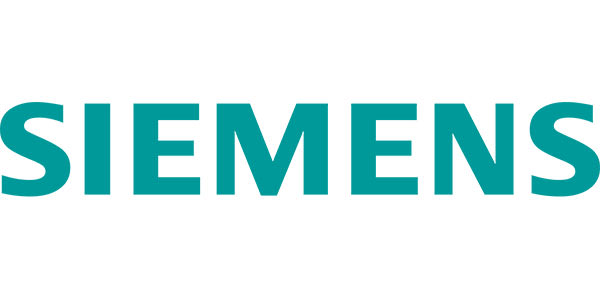
How digitalization transforms transportation in cities - Deep Dive
Live broadcast sponsored by Siemens Mobility
The pressure to fight climate change is growing as states and communities are setting ever more ambitious CO2 reduction targets - which fundamentally impact the transportation sector. At the same time, demand for mobility, particularly in urban areas, continues to increase, and cities are predicted to grow by 2.5 billion people over the next 30 years.
In this deep-dive session we combine four individual case studies and look at digital technologies with an impact on urban mobility. We discuss the future of smart signaling with 5G, how we can maximize the value from rail assets over the lifecycle through digital asset management and look at country-wide MaaS solutions. And we show how we can implement these solutions in cities responsibly and safely. Along these examples, we seek to provide insights on how cities and transportation systems can learn from each other in order to make transportation futureproof.
5G: The future is smart signaling
New mobile technologies such as 5G will revolutionize the mobility industry. 5G wireless communications will play a significant role in how mass transit signalling is designed and installed in the field through virtualizing hardware in the field. 5G will reduce signalling infrastructure such as radio and other trackside hardware, including hardware and cabling, and replace many legacy radio technologies. It will also act as the standardized radio technology for wireless-based activities, such as train to track communication. With 5G the future is smart signalling, offering mass transit operators many new capabilities, including higher reliability, lower latencies, and ultra-broadband connectivity.
Manfred Schienbein, Head of CoC COMS
Maximizing the value from rail assets over the lifecycle through digiatal asset management
Balancing performance, costs, and risks of rail systems according to ISO 55001 isn’t an easy task for asset owners, asset stewards, maintainers, and operators of rolling stock and rail infrastructure. That’s why we’re offering intelligent support for improved decision-making: With our data-driven asset performence management and asset inventment planning tools, you can optimize your rail systems’ lifecycle costs and renewal strategies and maximize their availability and operational efficiency.
Dieter Barnard, Head of Digital Offerings at Siemens Mobilty Customer Services
Christian Mehlhorn, Digital Services APAC – Sales and Implementation Manager
Country-wide MaaS solutions
"Establishing Mobility as a Service (MaaS) – this is what Siemens Mobility, Hacon, eos.uptrade, Bytemark and Padam Mobility are working on together. Our MaaS platform integrates a wide variety of data and interfaces – from public and private transport to demand-responsive services (DRT), road traffic information, carsharing providers, taxi, bike and pedestrian routing. Automatic
best-price calculation at the end of the trip guarantees utmost flexibility and comfort across all transport modes, beyond tariff zones. The idea behind MaaS (Mobility as a Service) is easy: Travelers wish to get from door to door as quickly and conveniently as possible. The fastest and most comfortable journey can often require a combination of several types of transportation, e.g., subway and car sharing. Instead of planning and booking each individual section of a trip with separate apps from various transportation providers, MaaS solutions combine all the different mobility offers in just one app. The advantages are obvious: just one login, clear travel information and one payment process – making traveling much more intuitive and comfortable. MaaS platforms are a time saver for customers and are becoming more and more popular around the world. The complexity of the implementation can only be managed if the interfaces between the different transport companies are efficiently coordinated. In addition to focusing on the travelers’ requirements, it is also important to consider the specific needs of the transport providers. By doing so, a MaaS platform can become a major success."
Alexander Wehmeyer, Head of International Projects at Hacon
Cybersecurity: Responsible Digitalization for Mobility in cities
The advance and benefits of digitalization in the transport sector and the related need for cybersecurity is undisputed. Operators of urban rail systems face new threats and new laws and define new requirements for cybersecurity. These requirements not only take technical implementations into consideration, but also processes and the inclusion of all internal and external stakeholders along the lifecycle of a transportation system.
Christian Paulsen, Product and Solution Security Officer, Siemens Mobility
Loading feed

Speakers


An error occurred trying to play the stream. Please reload the page and try again.
CloseNick is Executive Editor of Railway Gazette Group. He has covered global rail technology and policy stories for Railway Gazette since joining the title as News Reporter in 2006. Nick has visited more than 50 countries to report on rail and metro projects, and he has become a familiar face within the rail sector by presenting Railway Gazette Group’s flagship Interactive Broadcast series, and by chairing and moderating blue-chip events across the industry, including the UNIFE General Assembly and the World Congress on Railway Research.
Nick has been an active supporter of the campaign to develop a domestic high speed rail network in the UK, and a member and advocate for the Young Rail Professionals networking association, which seeks to promote rail careers to the next generation and boost diversity within the industry. He is a regular commentator on public transport issues in mainstream media channels, including BBC television and radio, Sky News, and broadsheet newspapers.
Born in Rochdale, UK, Nick graduated with a BA (Hons) in History from the University of York in 2002. Before joining Railway Gazette Group, Nick spent a year working in a specialist school for children with learning difficulties in rural France, and he was a digital journalist and editor covering the energy and financial services sectors for market analysis company Datamonitor.







